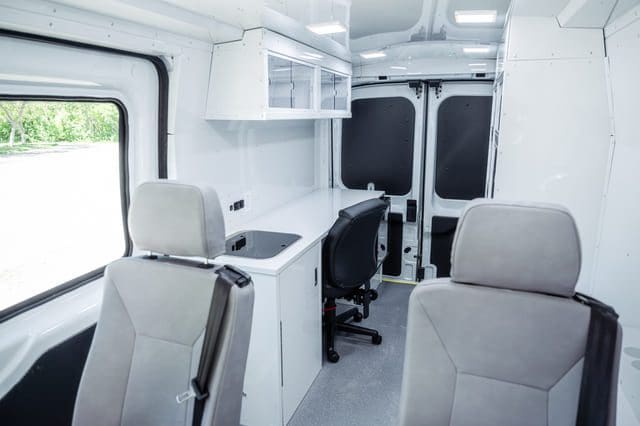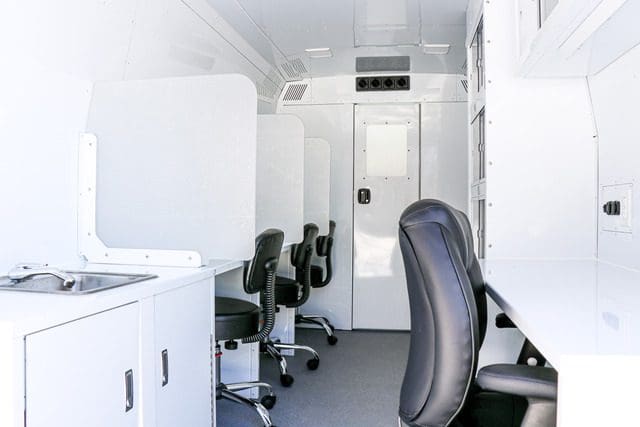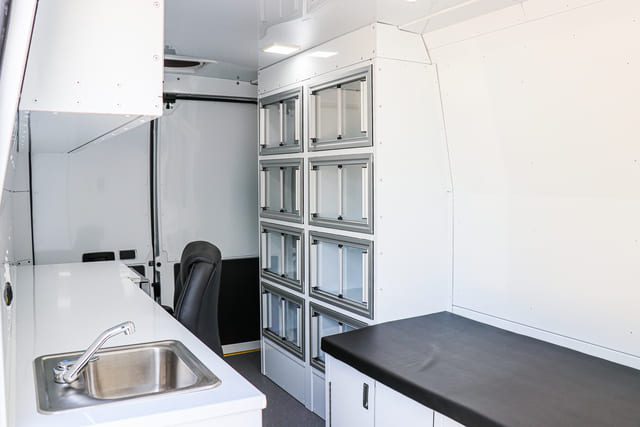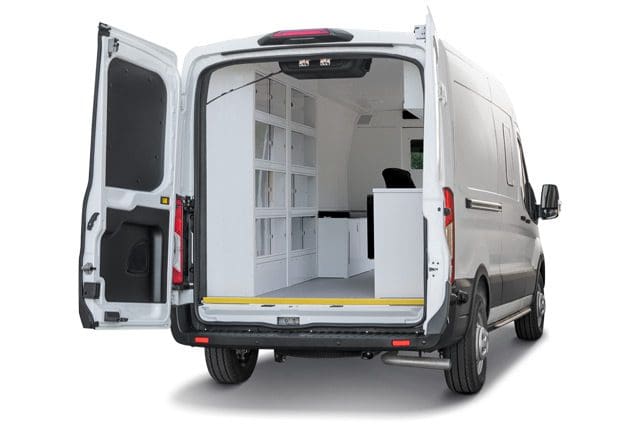Over 50 million Americans were experiencing some form of mental illness between 2019 and 2020, and 12 million adults reported thoughts of suicide. Nearly 28 million people don’t receive treatment for mental illness, and over 28% of all adults with mental illness in the U.S. reported they can’t receive treatment because they’re not able to afford it. Fortunately, mobile therapy is a strong solution to this issue and these staggering statistics.
At AVAN Mobility, we manufacture 4 different types of mobile medical vehicles that organizations like yours can use for healthcare purposes. If you’re looking to start a mobile therapy program that’s aimed at helping people struggling with mental health issues, our Mobile Outreach Van is something to consider.
In this article, you’ll learn about the top 5 benefits of mobile therapy in the U.S. You’ll also leave this article with a better idea of how you can get your mobile therapy program off the ground with a Mobile Outreach Van.
7 factors that contribute to mental illness in the U.S.
In the United States, some places face more mental health challenges than others. Here, we’ll explore a few of these areas and why they experience higher rates of mental health issues.
1. Urban centers
Big cities like New York, Los Angeles, and Chicago often have more mental health problems. This is because of the fast-paced lifestyle, high cost of living, and overcrowding. People feel stressed and isolated.
Studies have shown that the risk of developing depression is 20% higher in urban dwellers than those who live outside the city.
2. Rural communities
In rural areas, access to mental health services is limited. Long distances to clinics and a shortage of mental health professionals make it harder for people to get help.
Some examples of rural communities with poor access to mental health services include:
- Appalachian Region, Kentucky
- Northern Maine
- Central Appalachia, West Virginia
- Southwestern Arizona Navajo Nation
- Central Montana
- Mississippi Delta Region
- North Dakota’s Bakken Region
- Eastern Oregon
3. Economic struggles
Places with high unemployment or poverty rates tend to have more mental health issues. Financial stress can lead to anxiety and depression.
Some of the states with the highest poverty rates include:
- Mississippi
- Louisiana
- New Mexico
- West Virginia
- Kentucky
4. Substance abuse
Areas with a lot of drug and alcohol abuse tend to have people with more mental health problems. Substance abuse can worsen mental health and create a cycle of issues.
Drug use can lead to mental health problems because certain drugs affect the brain’s balance of chemicals. This disruption can result in mood swings, anxiety, and depression, making it harder for individuals to maintain good mental well-being.
5. Lack of education
In some areas, limited access to quality education can lead to lower awareness about mental health. This can result in undiagnosed or untreated conditions. Lack of education can lead to decreased job and income stability, strained relationships, and increased uptake of harmful substances.
These factors, combined with social judgment or direct psychological effects, can contribute to mental health issues
6. Cultural factors
Different cultures have unique stigmas around mental health. Some areas discourage seeking help due to cultural beliefs. There are some cultures that view mental health problems as a sign of weakness, which further discourages individuals from seeking help
7. Natural disasters
Places prone to natural disasters like hurricanes or wildfires experience higher rates of mental health issues due to the trauma and loss associated with such events.
In these areas, addressing mental health issues often involves improving access to care, reducing stigma, and addressing the root causes of stress and hardship.
What is mobile therapy?
Mobile therapy in the United States means mental health care that comes to the patients. Instead of going to a clinic, specialized vans visit different places to help people with their mental health.
These vans have trained professionals like therapists and counselors. They travel to schools, neighborhoods, and rural areas. They offer counseling and therapy right in the locations where people need it the most.
The goal of mobile therapy: Mobile therapy makes it easier for people to get mental health help. It’s for those who have trouble going to a regular clinic, maybe because of transportation or feeling uncomfortable. Mobile therapy brings support straight to the doorstep.
5 benefits of mobile therapy in the United States
Mobile therapy offers many important benefits for people in the United States, making mental health care more accessible and convenient. Let’s explore five key advantages:
1. Accessibility in rural areas
In rural parts of the U.S., getting to a mental health clinic is a challenge due to long distances and limited transportation options. Mobile therapy bridges this gap. For example, in places like rural Appalachia or remote areas of Montana, where mental health services are often scarce, mobile therapy vans can travel to these regions, ensuring that people in need receive vital support.
2. Reducing stigma
Mobile therapy brings mental health care to community settings, reducing the stigma associated with seeking help. For instance, in urban neighborhoods where people feel uncomfortable visiting a traditional clinic due to concerns about judgment or confidentiality, mobile therapy units parked in familiar locations like local community centers or schools can make a big difference.
3. School-based support
Mobile therapy is especially beneficial for students. These vans visit schools across the country, providing counseling and therapy services to children and teenagers. This is important in inner-city neighborhoods like the South Bronx in New York City, or underserved communities, where students face various challenges that impact their mental well-being.
4. Disaster response
During natural disasters or emergencies, mobile therapy units can quickly mobilize to provide critical mental health support. For instance, after a hurricane in the Gulf Coast or wildfires in California, these vans can offer immediate assistance to affected communities, helping individuals cope with trauma and stress.
5. Workplace wellness
In bustling cities like New York or Chicago, where work-related stress is high, mobile therapy units can partner with businesses to offer on-site mental health services to employees. This proactive approach promotes employee well-being and can enhance productivity.
What type of vehicles can mobile therapy be provided in?
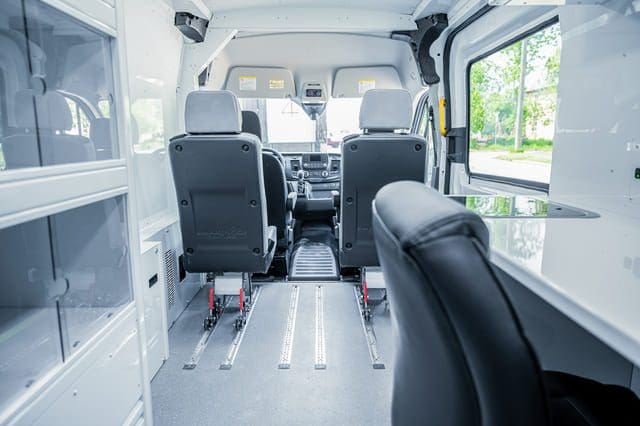
Our Mobile Outreach Van at AVAN Mobility is a great choice for your mobile therapy program. It’s designed to help people where they feel most comfortable, like their own communities. This is especially important for those experiencing mental health issues due to homelessness or addiction.
In communities where there’s stigma around seeking help, this van helps build trust. People often don’t want to go to regular clinics because they’re afraid of being judged. AVAN Mobility’s Mobile Outreach Van is more discreet and approachable, making people more likely to seek help.
Unlike fixed clinics in only one place, these vans can go to different neighborhoods. They’re not stuck in one location. That means they can reach more people who might not visit traditional services regularly.
The van has everything needed for mobile therapy. It has storage space, an office desk, a sink, a fridge, removable seats, a power supply, and heating/cooling. This creates a clean and organized space for providing mobile therapy.
The Mobile Outreach Van and mobile therapy
Let’s take a look at an example of how your organization can use our Mobile Outreach Van to provide mobile therapy that can make a huge impact.
For this example, let’s use Tiffany, a 35-year-old woman living in a small rural town in the heart of Oklahoma. Tiffany has been silently battling depression for years, but she’s never sought help because the nearest mental health clinic is hours away, and she doesn’t own a car. Her isolation and despair have grown to a point where she contemplates ending her life.
One fateful day, as Tiffany sits on her porch, tears streaming down her face, she notices something unusual – AVAN Mobility’s Mobile Outreach Van parking nearby. With her curiosity piqued, she decides to approach it. Inside, she’s greeted by a friendly therapist who immediately puts her at ease. Tiffany starts sharing her struggles, pouring out her feelings that she’s kept bottled up for so long.
The therapist listens, empathizes, and provides much-needed support right there in the van. Tiffany realizes that someone cares and that there’s help available, even in her remote town. Over several visits, she receives counseling and therapy tailored to her needs. Slowly but surely, Tiffany begins her journey to recovery.
The Mobile Outreach Van provides mental health services and connects her with local support groups and resources. Tiffany starts attending group sessions, finding comfort in knowing she’s not alone in her struggles. Her life takes a turn for the better.
We’ve also recently developed a Mobile Counseling Van with a living room feel, which is perfect for organizations focused on counseling services.
What’s the outcome?
Fast forward a year, and Tiffany is a different person. She’s not only surviving but thriving. She often tells her story to others in her community, encouraging them to seek help if needed. The Mobile Outreach Van reached out to Tiffany where she felt most comfortable and played a crucial role in saving her life and giving her a second chance at happiness.
This example illustrates how your organization can use a Mobile Outreach Van to make a real difference in the lives of individuals struggling with mental illness in the U.S. It’s a lifeline for those in remote areas, breaking down barriers to care, and offering hope when it’s needed most.
Where to go from here?
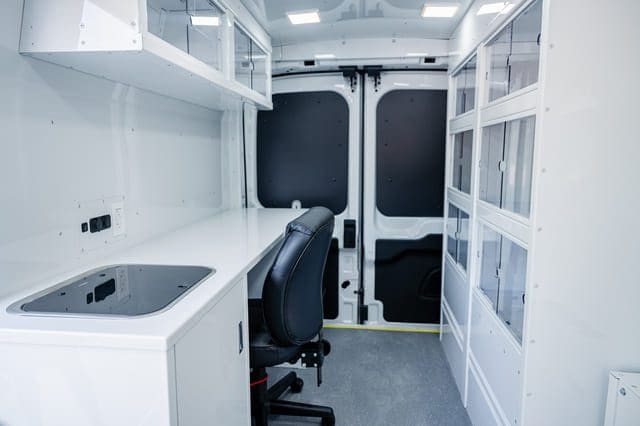
You came to this article wondering what mobile therapy was and how it can be used to help people struggling with mental health.
Now that you know more about the five benefits of mobile therapy in the U.S., you and your organization might be wondering where to go from here.
Our goal at AVAN Mobility is to reduce barriers to healthcare, and that’s why we manufacture mobile medical vans like the Mobile Outreach Van to do exactly that. If you’re interested in learning more about this van, talk to one of our experts today.
From here, you should take a look at our articles on securing grants and how to apply for them. This will help fast-track you, especially when it comes to funding, in the right direction to start your mobile therapy clinic with our Mobile Outreach Van.
